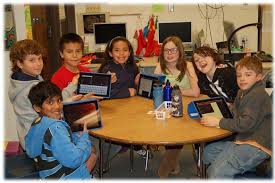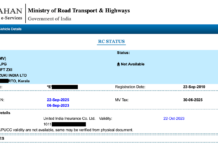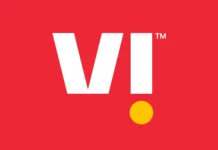Classrooms the world over are increasingly turning futuristic, with the latest gadgets and technology replacing chalk-and-board teaching. The process is on in India, too, albeit only in pockets.
Mohammed Fazil, who teaches grades four to eight in a government school in the southern Indian city of Bengaluru, uses augmented reality to trigger computer-generated images around his classroom. He uses Google Cardboard, a virtual reality platform, and Google’s Expeditions app to take students on virtual field trips. Fazil also uses motion-sensing technology with a Microsoft Kinect device to play math games.
Elsewhere, in Solapur, Maharashtra, in western India, another government school teacher, Ranjitsinh Disale, is creating quick response (QR) codes in textbooks that link out to online materials—a good hack to extend learning outside the classroom, check absenteeism through engagement, and keep in touch with parents.
These are anecdotes mentioned in a January 2017 report “Teaching and Technology: Case Studies from India” by the Central Square Foundation, a venture philanthropy fund and policy think tank based in New Delhi.
Having realized their potential, especially in rural areas, the Indian government is setting up hundreds of virtual classrooms. Likewise, girls from one of the world’s largest slums, Dharavi in Mumbai, are learning to code courtesy the non-profit Dharavi Diary.
Yet, these are only exceptions, a recent survey by Cambridge Assessment International Education, a not-for-profit arm of the Cambridge University, has found.
If one zooms out and looks at the bigger picture, India’s classrooms are by and large outdated. Most Indian classrooms lag in incorporating smartphones, tablets, or even the simple whiteboard.
Blackboard nation
Globally, just over a third of students say blackboards and chalk are used during lessons, according to the study. India, though, has yet to let go of the archaic teaching tools: Over two-thirds of the respondents from India still experience the blackboard-and-chalk combo—higher than any other country.
The education group polled over 20,000 teachers and students from around the world between March and May 2018. The sample included 4,453 teachers and 3,927 students from India.
Meanwhile, nowhere in the world have new technologies superseded traditional tools completely. “…most schools use a blend of teaching tools, with pens, paper and blackboards being used alongside interactive smartboards or tablets,” the study noted.
But there is more to technology-enabled education than just handing over devices to students, previous research has shown. For instance, the “One Laptop Per Child” program announced in Peru back in 2005 increased the ratio of computers to students in schools, but its impact on test scores in math and language was negligible.
A similar 2018 study of 15-year-olds in Europe revealed that giving laptops, iPads, and even e-books was associated with significantly lower educational performance.
But in the hands of teachers, the technology can be put to better use. Technology has been known to increase engagement as well as the retention of knowledge. Eventually, if there is mass adoption of tech tools in the classroom, the hope is that learning will become more interactive and personalized.
But before all of this, India first has to overcome the dearth of digital basics—power, computers, and internet access—plaguing its schools.
Courtesy Quartz







